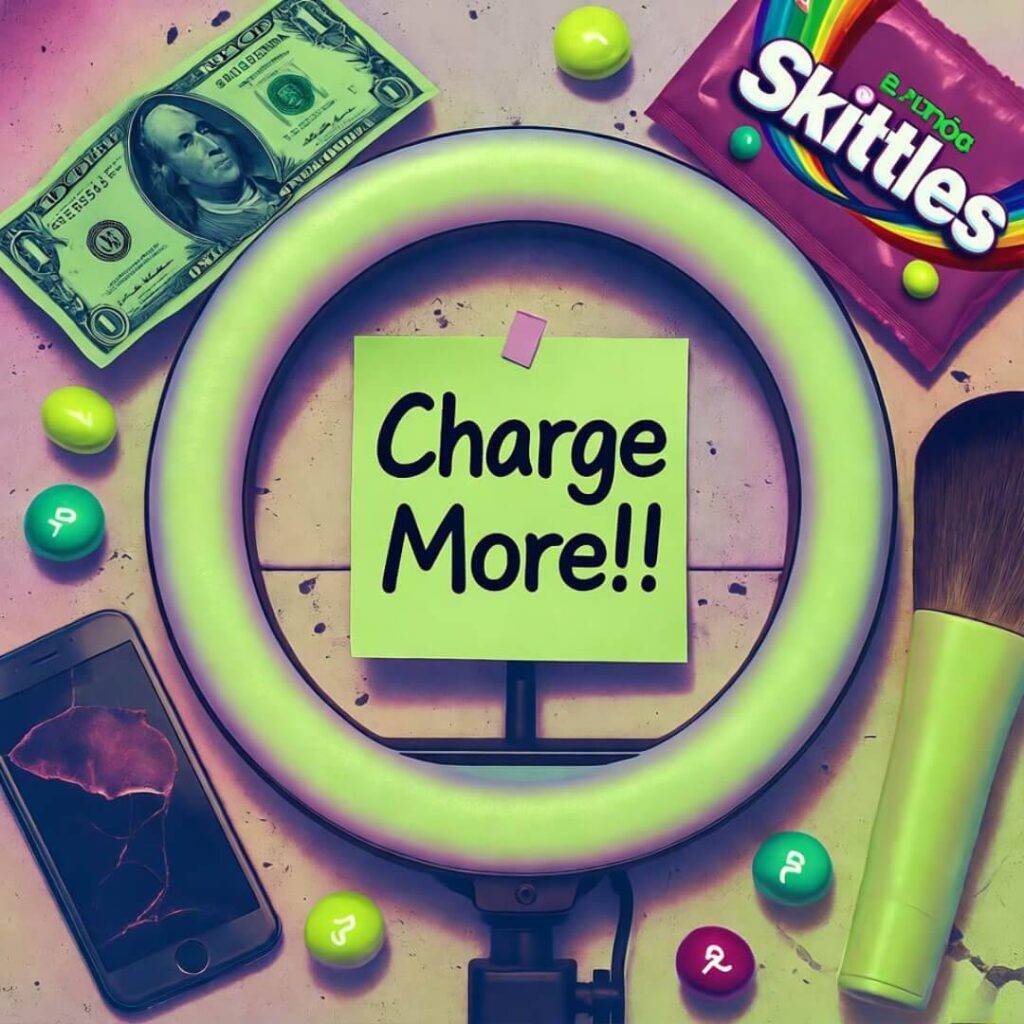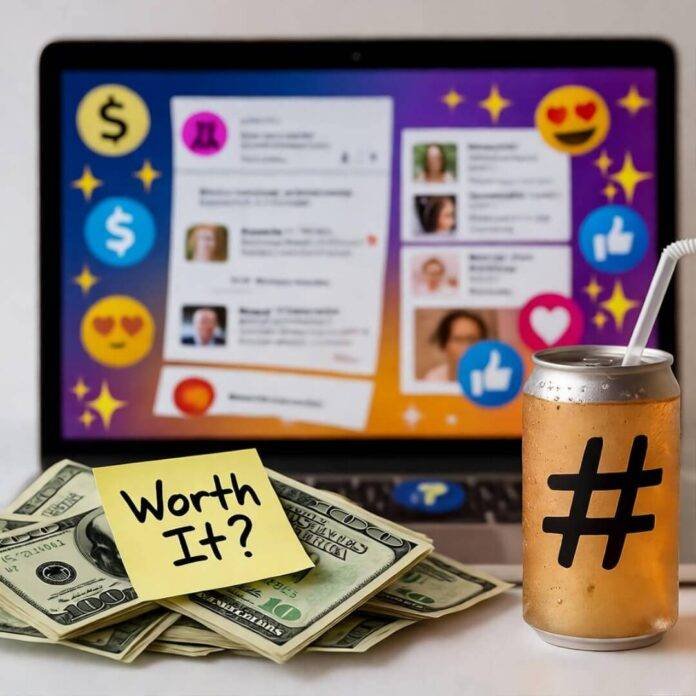Paid influencer campaigns are a total trip, y’all. I’m sprawled in my tiny Queens apartment, empty seltzer cans everywhere, my sad ficus dropping leaves like it’s giving up on me. Some brand DMs me on X, all casual like, “Hey, wanna collab?” And I’m sitting there, in my stained sweatshirt, eating day-old pizza, thinking, how much do I even ask for? First time I got an offer, I quoted $20 for a post. Twenty bucks! I spent $15 on the subway to get props for it. Total clown move. Here’s my sloppy, real-as-hell take on figuring out influencer pricing in 2025, straight from my chaotic life in NYC.
Why Paid Influencer Campaigns Feel Like a Dumpster Fire
So I’m at this bougie Astoria coffee shop, right? Overpriced lattes, baristas judging my ripped sneakers. I get an email from some fitness brand: “Name your rate!” My palms are sweaty, my phone’s at 1%, and I’m googling “how much do influencers charge” like I’m about to fail a pop quiz. Real talk, setting prices for paid influencer campaigns is like bargaining at a sketchy bodega—you’re just guessing and praying you don’t get scammed.
Here’s what I’ve learned after screwing it up:
- Your follower count ain’t the whole deal. I thought my 7K Instagram followers made me a nobody. Nope! My X posts get 6-7% engagement, and brands are into that.
- Brands will try to cheap out. I said yes to $35 for a post once ‘cause I needed cash. Spoiler: I spent $45 on props. Major L.
- Google is your homie. I found Influencer Marketing Hub and their rate calculators. They’re legit, even if they make my eyes cross.

How I Kinda Sort Out Rates for Paid Influencer Campaigns
How do I figure out what to charge for paid influencer campaigns? I’m still a hot mess, but I got a wobbly system. It’s like cooking ramen at 3 a.m.—you throw in whatever’s in the pantry and hope it doesn’t suck.
Step 1: Check Your Numbers (Even If They’re Meh)
I’m kinda nerdy about my analytics now. My X posts pull 6-7% engagement, which is solid for a micro-influencer like me. (Shoutout to my 41 ride-or-die followers who smash that like button!) Tools like Hootsuite or Social Blade are clutch. If your audience is super specific—like my love for thrifted band tees—brands will pay extra for that.
Step 2: Do Some Shaky Math
Here’s my janky formula for influencer pricing:
- Base rate: Maybe $1-$2 per 1,000 followers for a post. My 7K followers = $7-$14, but I bump it up ‘cause rent ain’t cheap.
- Engagement boost: If your engagement’s poppin’ (5% or higher), add like 20-30%. My 6% means I can charge $9-$18.
- Effort tax: Videos like Reels or TikToks are a pain in the ass. I charge double. That smoothie vid I shot in my kitchen? Took 14 takes and my sanity. Worth $70, minimum.
Step 3: Negotiate Without Totally Losing It
Last month, I’m at this grimy diner, my cat’s knocking over my lamp back home, and I’m on a Zoom with a brand. I quote $100 for a post, they hit back with $40. I’m panicking, my Wi-Fi’s lagging, and I almost cave. But I stuck it out and got $85. Moral? Fake it till you make it, even if you’re sweating buckets.

My Biggest Fails in Paid Influencer Campaigns
Oh god, my first paid influencer campaign was a straight-up disaster. I partnered with a taco joint for $25 and a free burrito. Sounds cute, right? Except I spent $10 on the train to get there, and the burrito gave me heartburn for days. Here’s what I wish someone told me:
- Don’t lowball yourself. That $25 deal? Should’ve been $75 for the hassle.
- Get it in writing. I did a verbal deal once, posted the content, and the brand ghosted. No cash, just vibes. Never again.
- Know your audience’s worth. My followers are thrifting geeks and indie music nerds—brands targeting them will pay more ‘cause my people actually buy stuff.
Peep Forbes’ guide on influencer pricing for advice that’s way less chaotic than my brain.
What’s a “Fair” Price for Paid Influencer Campaigns in 2025?
No lie, there’s no magic number. But here’s the tea from X and my own dumb mistakes:
- Micro-influencers (1K-10K followers): $10-$70 per post, $40-$150 for videos.
- Mid-tier (10K-50K followers): $70-$300 per post, $150-$600 for videos.
- Big dogs (50K+ followers): $300-$2,500+ per post. Wild.
Depends on the platform (Instagram’s more expensive than X), your niche, and how much work you’re doing. Saw an X thread where a 5K-follower influencer charged $180 for a Reel ‘cause their audience was super engaged. Goals, man.

Wrapping Up My Chaos on Paid Influencer Campaigns
Look, figuring out paid influencer campaigns is like trying to parallel park in Times Square—you’re stressed, you’re guessing, you might cry. Every dumb thing I’ve done, from undercharging to forgetting contracts, taught me to value my time and my weird little audience. My advice? Quote high, haggle smart, don’t say yes to every brand that slides in your DMs. Also, don’t film a Reel at 2 a.m. with a flickering ring light like I did last week.
Wanna talk influencer pricing? Hit me up on X—I’m @ThriftTeeMess. What’s the dumbest thing you’ve done for a campaign? Spill the tea, I’m nosy!












































